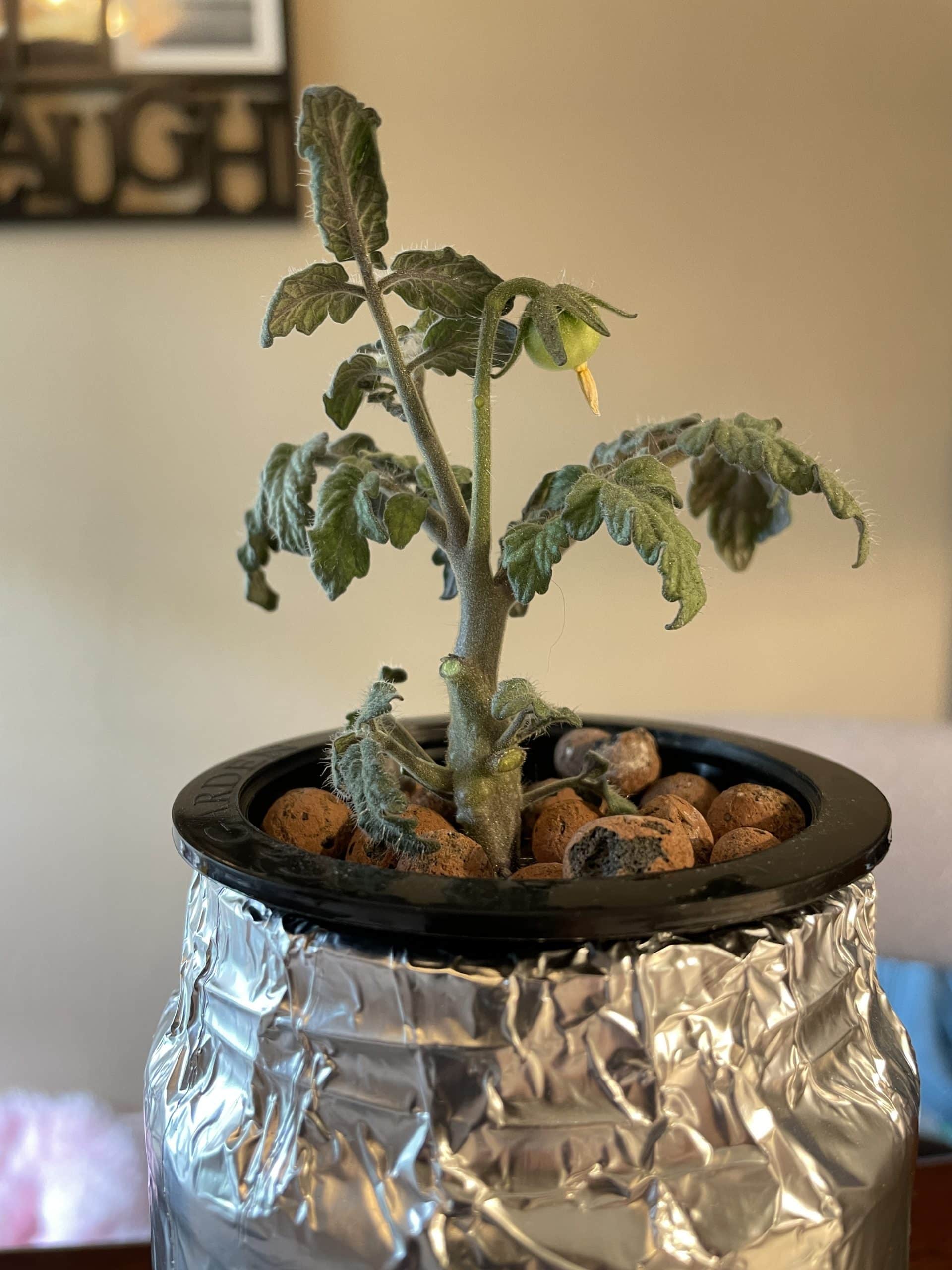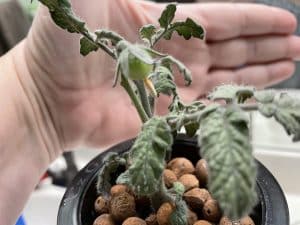Growing Tomatoes With the Kratky Method
The Kratky method is an easy, low-maintenance way to grow tomatoes. It uses a self-watering container and requires no pumps or electricity, making it an ideal option for those with limited resources or space. Unlike traditional hydroponic systems, the Kratky method doesn’t require any regular maintenance since the water level remains constant.
To begin, you’ll need a container with drainage holes drilled into the bottom. A plastic storage bin works well for this purpose. Fill the container with a soilless growing medium such as coco coir or peat moss. You’ll also need tomato seedlings of your choice and enough nutrient solution to fill the container up to about two inches from the top of the container.
Once the container is filled and the seedlings are planted, fill the remaining two inches of the container with water and add a few drops of pH adjuster if needed. Place the container in a sunny location and allow it to sit for one to two weeks until roots have grown into the nutrient solution. During this time, check that there is enough water in the container every few days.
After two weeks, you can begin feeding your tomatoes. Slowly pour additional nutrient solution into the container at regular intervals for about four weeks or until your plants start producing fruit. Make sure to keep water levels consistent throughout this process as over-watering can damage tomato roots. Once fruit begins appearing on your plants, you won’t need to water them any more as the plants will draw the moisture they need from their roots.
The Kratky method is a great way to grow tomatoes with minimal effort and resources. With this low-maintenance system, you can be sure to have delicious home-grown tomatoes all season long! Try it out today and enjoy the taste of success.

Growing Hydroponic Tomatoes Using the Kratky Method in Mason JarsGrowing Hydroponic Tomatoes Using the Kratky Method in Mason Jars
Kratky Hydroponic Starter Products on Amazon
Advertisement
You can easily start from things you have on hand, such as empty food-grade glass jars and food containers with holes poked through them for net cups. The clay pebbles are hard to duplicate though I found, as they wick up moisture. When I got into Kratky a bit more, I bought some professional supplies and love them. These are the 4 things I would recommend should you wish to go that route as well.
I have tried a few types of the net cups and hands-down the CZ brand are the best. They are thick and very well made.
This is the brand of clay pebbles I typically buy but I really think you could go with most any of them.
I like this brand because they do tend to stay more moist than the other brands I have tried.
This is only wishlist. I currently use tin foil to cover my jars. I plan on trying these in the the fall.
As an Amazon Associate I earn from qualifying purchases.
Steps to Grow Kratky Tomatoes
Select Tomato Container
Establish the container—Set up a container with net pots, hydroton beads, and water.
Select Tomato Seeds
Start seeds in water—Soak tomato seeds in warm water for 24 hours before planting them.
Plant Tomato Seeds
Plant the seeds—Gently place two or three tomato seeds into each net pot filled with hydroton beads.
Add Tomato Nutrients
Add nutrient solution—Fill the container with a nutrient solution such as fish emulsion or an organic fertlizer to feed the plants while they’re growing.
Monitor Tomato Growth
Monitor growth level—Check periodically to monitor and adjust the nutrient levels and pH balance in the container if necessary.
Harvest Fresh Tomatoes
Harvest tomatoes when ready—Wait until tomatoes are ripe and ready to be harvested, then enjoy the fruits of your labor!
Clone Tomatoes or Repeat from Seed
Repeat—Empty and clean the container out after harvesting and start the process over again for a new crop of tomatoes or with your tomato clones.
Nutrients for Hydroponic Tomatoes
 Tomatoes grown in the Kratky method require the same basic nutrients a regular hydroponic tomato needs. These include nitrogen, phosphorus, potassium, calcium, magnesium, iron, and trace elements such as boron, zinc and manganese.
Tomatoes grown in the Kratky method require the same basic nutrients a regular hydroponic tomato needs. These include nitrogen, phosphorus, potassium, calcium, magnesium, iron, and trace elements such as boron, zinc and manganese.
When growing tomatoes with the Kratky method you’ll need to use a fertilizer that is available in liquid form. You can either buy this pre-mixed or make your own using commercially available powders. The concentration of the nutrient solution should be kept between 1-2 EC (electrical conductivity) for optimal growth and fruiting.
You can also add additional minerals such as dolomite lime and Epsom salts to buffer the pH of the nutrient solution, which is especially important when using tap water. It’s best to add these minerals at the start of your tomato crop cycle and adjust as needed throughout the season.
Finding Hydroponic Tomatoes Fertilizer
If you’re having trouble finding a fertilizer specifically designed for hydroponic tomatoes, it’s also possible to use a basic hydroponic nutrient solution that is designed for lettuce or other leafy greens. Just be sure to check the label before purchasing to make sure it provides all the necessary nutrients tomatoes need.
Kratky Tomatoes are very prolific and you can even clone the plants easily in this method. By following these tips, you can easily grow delicious Kratky tomatoes in no time! So get started today and enjoy fresh home-grown tomatoes any time of year.
Micro / Dwarf / Tiny Tomato Varieties Grow Amazingly Well Indoors in the Kratky Method
Micro & Dwarf Varities – What We Have Had Great Success With
Advertisement
These are the varieties we have had amazing success with in our Kratky tomato hydroponic garden.
The Red Robins were super compact and the fruit was super juicy and sweet.
The Tiny Tim Tomato seeds grew well and the plants were pretty compact.
These are something I want to try. I love the yellow pear I grow outside.
This is on my list to try this fall in my Kratky indoor hydro garden.
As an Amazon Associate I earn from qualifying purchases.
HOW TO GROW TOMATOES USING THE KRATKY METHOD OF HYDROPONICS – FAQs
How do I start tomatoes using the Kratky method?
Begin by preparing a nutrient solution in a water-tight container, insert your tomato plants into net pots filled with a suitable growing medium, and ensure the roots are partially submerged in the solution.
What are the best tomato varieties for the Kratky method?
Cherry and determinate tomato varieties are often recommended for the Kratky method due to their compact growth habit and manageable size.
What is the ideal pH level for growing tomatoes hydroponically?
The ideal pH level for hydroponic tomatoes is between 5.5 and 6.5 to ensure optimal nutrient uptake.
Can I use tap water for my Kratky hydroponic tomatoes?
Yes, tap water can be used, but it should be left out for 24-48 hours to allow chlorine to evaporate or be tested and adjusted for pH and nutrient levels as needed.
How do tomato plants get oxygen in the Kratky method?
As the water level drops, air gaps form between the water surface and the net pot, allowing roots to access oxygen directly from the air.
How long does it take for tomatoes to grow using the Kratky method?
The time from planting to harvest can vary, but tomatoes typically take 60-80 days to mature using the Kratky method, depending on the variety and conditions.
Do tomatoes grown with the Kratky method taste different?
Tomatoes grown hydroponically, including with the Kratky method, can taste as flavorful as soil-grown tomatoes, depending on the nutrients and care they receive.
How do I support tomato plants in a Kratky system?
Use stakes, cages, or trellises to support tomato plants as they grow to prevent them from falling over due to their weight.
What is the best growing medium for Kratky tomatoes?
Lightweight, inert mediums like perlite, vermiculite, or coconut coir are ideal for supporting the plants and allowing root growth.
How do I ensure proper light for tomatoes in a Kratky system?
Provide sufficient natural sunlight or use artificial grow lights to ensure your tomato plants receive the light they need for photosynthesis.








